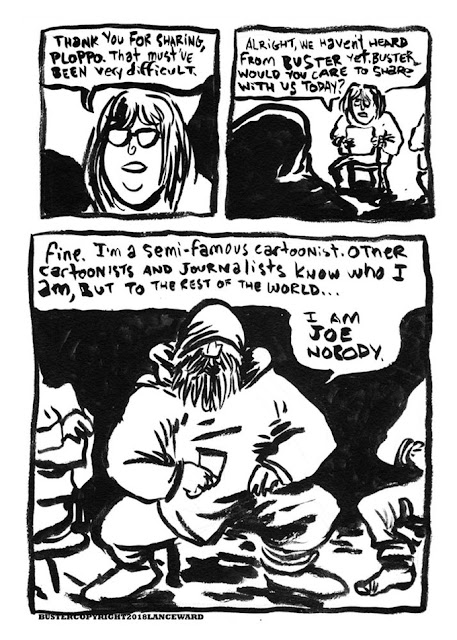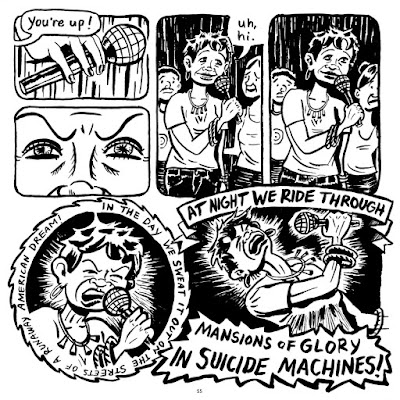COMICS CRITICISM
* Edwin Turner reviews KINGDOM by Jon McNaught (Nobrow Press), writing "What does happen though is difficult to pin down here in language though---which is fitting, as one of Kingdom's themes is the failure of articulated language to effectively communicate. What McNaught gives us in Kingdom is a feeling fraught with ambiguity---restless tranquility, joyful melancholy, pleasant waves of boredom."
* Hoffman also writes about THE SEA by Rikke Villadsen (Fantagraphics), writing "In her strange and lilting world, Villadsen uses the fisherman as a stand-in for a toxic masculinity seen all too often across the globe. The events of The Sea lay bare that toxicity and show its inherent worthlessness. Pride and boasting cannot steer a ship, and no amount of tattoos or pipe smoking can make a man a sailor. In this symbolism, Villadsen exposes the fraudulent nature of toxic masculinity. More precisely, not only is the fisherman a fraud, but his fraudulence leads to his demise.
* Robert Kirby reviews BLOSSOMS IN AUTUMN (SelfMadeHero) by Zidrou and Aimée de Jongh which "captures the poetry of human relationships along with the belief that life might hold a few surprises in store, should we allow ourselves to welcome them."
* Kevin Bramer talks about DODO COMICS #5 by Grant Thomas.
WHATNOT
* No offense to Justin F. Martin (or maybe ALL the offense), but sweet holy hell THIS is not ... you know ... good.
* Sara L. Jewell interviews CARTA MONIR for The MNT.
* Hillary Brown interviews BOX BROWN about his new book Cannabis: The Illegalization of Weed in America.
* Mark Newgarden interviews BILL GRIFFITH about his new book Nobody's Fool.
* Jonathan Dyck has a comic up on Popula called LENT.
* Trying to figure out exactly WHAT the Futures of Comics is...
* Three Poems by Marshall Mallicoat.





































